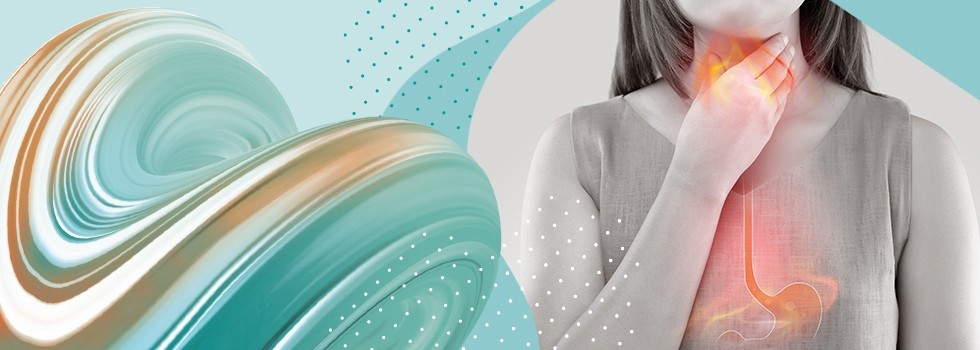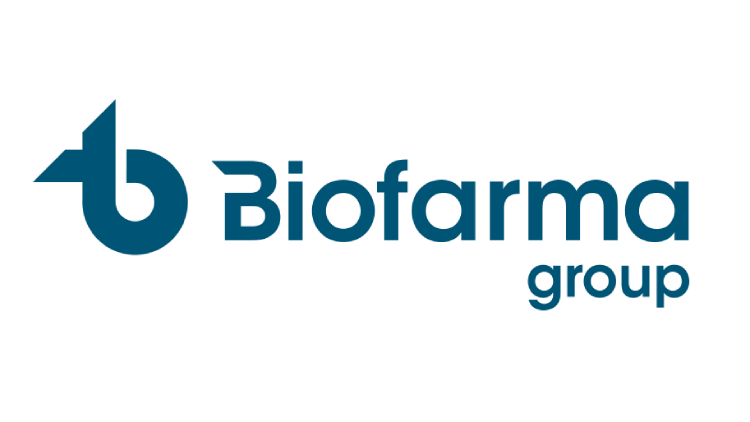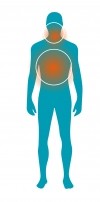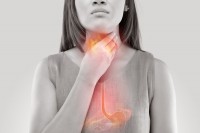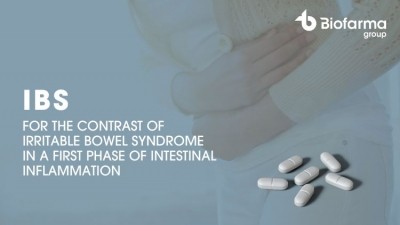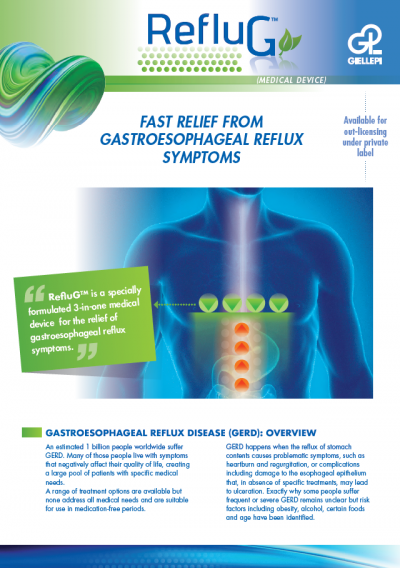Promotional Features
RefluG Isorepair: A clinically validated gastroesophageal reflux treatment with a novel mechanism of action
An estimated 1 billion people worldwide suffer from gastroesophageal reflux disease (GERD).1 Many of those people live with symptoms that negatively affect their quality of life, creating a large pool of patients with specific medical needs. A range of treatment options are available but none address all medical needs, are suitable for use in medication-free periods and boost the effectiveness of existing treatments. In RefluG Isorepair, Giellepi has a product designed to fill that gap in the market.
The therapeutic and commercial opportunities for products that improve the lives of people with GERD are clear. GERD happens when the reflux of stomach contents causes problematic symptoms, such as heartburn and cough, or complications including damage to the esophageal epithelium that, in absence of specific treatments, may lead to ulceration and esophageal adenocarcinoma. Exactly why some people suffer frequent or severe GERD remains unclear but risk factors including obesity, alcohol, certain foods and age have been identified.2–4
Those risk factors help explain changes in the prevalence of GERD in recent decades. A combination of aging populations, changing diets and rising levels of obesity is driving up the number of people with GERD. In 1990, an estimated 40 million people in Western Europe suffered from GERD.5 By 2017, the number of GERD sufferers in the region had risen to more than 50 million. Other regions have experienced similar increases over the past 30 years.
The growth of the number of people with GERD has implications for individuals and societies. On an individual level, GERD negatively affects quality of life and, if it contributes to esophageal carcinoma, can be implicated in deaths. Better GERD treatments would bring relief to many millions of people.
For societies, morbidity associated with GERD represents a big burden on healthcare systems. At one point, treating dyspepsia, a term that captures GERD symptoms such as heartburn and acid reflux, took up 7% of the primary care prescribing budget in the UK.6
Researchers have developed a range of medical and surgical interventions for use in GERD patients whose conditions cannot be managed with lifestyle modifications. However, there remains scope to improve on the available treatment options, particularly for the non-erosive reflux disease (NERD) patients who suffer GERD-like symptoms in the absence of a visible esophageal mucosal lesion.
Many NERD cases are driven by visceral hypersensitivity, not acid, rendering proton pump inhibitors ineffective in those patients.7 As NERD is the most common GERD phenotype, accounting for up to 70% of all patients, there is a major unmet need for products that address its underlying causes.
Validating a novel GERD treatment
Most GERD products are alginates, also known as alginic acid derivatives. When alginates and products with similar mechanisms of action come into contact with gastric acid, they form a raft that blocks the flow of acidic refluxate. The mechanism of action can be effective but also has limitations.
RefluG Isorepair is different from other gastroesophageal reflux remedies. The non-pharmacological approach to GERD consists of a liquid formulation of hyaluronic acid, rice extract and amino acids in a bioadhesive polymer matrix. Each component has a different role.
The mucoadhesive polymers deliver functional ingredients to the esophageal mucosa and prolong adhesion time at the target site. Once at the target site, the water-storage properties of hyaluronic acid drive the development of a protective film that stops reflux from further damaging the mucosa. At the same time, the amino acids start trying to address the existing damage by promoting natural repair mechanisms. Finally, the rice extract soothes mucosal irritation and inflammation.
Giellepi has validated the triple action of its medical device RefluG Isorepair in clinical and preclinical studies. In one double-blind, placebo-controlled clinical study, investigators randomized patients who had suffered at least three episodes of moderate-severity heartburn in the past week to take three liquid sachets of RefluG Isorepair or placebo a day for 14 days.8
At the end of the treatment period, 95% of patients in the RefluG Isorepair cohort had experienced at least a three-point reduction on a total symptom score (TSS), compared to just 20% of participants who received placebo. The difference between the two arms was statistically significant.
RefluG Isorepair outperformed placebo against a range of secondary endpoints, too. Ninety percent of patients on RefluG Isorepair experienced a 50% improvement in TSS. No subjects on placebo had such a large change in TSS. Another secondary endpoint showed RefluG Isorepair acted quickly, with 50% of patients treated with the medical device going 24 hours without having heartburn after the first nine days in the study.
The effects on TSS and heartburn translated into improvements on quality of life measures. Patients who received RefluG Isorepair reported improved physical activity and general health parameters, as well as reduced physical pain.
Understanding how RefluG Isorepair works
To better understand the mechanism of action behind the efficacy RefluG Isorepair, Giellepi worked with academic researchers on preclinical assessments of the medical device.9 The researchers used in vitro and ex vivo models to assess the protective and regenerative effects of RefluG Isorepair against esophageal mucosal damage.
For the in vitro study, researchers induced lesions similar to those seen in the esophageal tissue of people with GERD to enable a comparison of the binding capacities, anti-inflammatory effects and reparative properties of RefluG Isorepair and a viscous control. The study showed RefluG Isorepair stops cell permeability and tight junction dysfunction induced by irritant medium simulating gastric content, validating the protective effect of the medical device.
The in vitro study also showed RefluG Isorepair downregulates expression of IL-6 and IL-8, cytokines that are highly expressed in GERD patients due to damage to the mucosa. The downregulation is further evidence that RefluG Isorepair forms an effective barrier and, in doing so, prevents activation of epithelial cells.
To confirm the findings, the researchers ran ex vivo experiments on excised rat esophagi. The study showed RefluG Isorepair binds to esophagus cells and prevents gastroesophageal reflux from causing damage, thereby providing further evidence of the potential anti-irritative, soothing and reparative properties of the intervention.
Addressing an unmet medical need
The clinical and preclinical studies are part of an ongoing research program at Giellepi, which is preparing to gather more data on the effect of RefluG Isorepair in humans in a big new multi-center trial. Giellepi is running the comprehensive development program to give its private label distributor partners the evidence they need to unlock European markets.
Private label distributors that work with Giellepi benefit from the company’s years of experience in GERD. As well as developing and validating RefluG Isorepair, Giellepi has created a raft-forming formulation for use in GERD patients, branded RefluG, that has a different mechanism of action.
Giellepi developed the medical devices to address the needs of GERD patients. With the prevalence of GERD rising in Europe, and many patients poorly served by existing treatments, there is a need for new interventions that prevent and repair damage associated with reflux. Clinical and preclinical data show RefluG Isorepair addresses the need, giving private label distributors an opportunity to improve the lives of millions of people and unlock a commercial opportunity by partnering with Giellepi.
References
1. Nirwan, J. S., Hasan, S. S., Babar, Z.-U.-D., Conway, B. R. & Ghori, M. U. Global Prevalence and Risk Factors of Gastro-oesophageal Reflux Disease (GORD): Systematic Review with Meta-analysis. Sci. Rep. 10, 5814 (2020).
2. Eusebi, L. H. et al. Global prevalence of, and risk factors for, gastro-oesophageal reflux symptoms: a meta-analysis. Gut 67, 430–440 (2018).
3. Hampel, H., Abraham, N. S. & El-Serag, H. B. Meta-analysis: obesity and the risk for gastroesophageal reflux disease and its complications. Ann. Intern. Med. 143, 199–211 (2005).
4. Corley, D. A. & Kubo, A. Body mass index and gastroesophageal reflux disease: a systematic review and meta-analysis. Am. J. Gastroenterol. 101, 2619–2628 (2006).
5. GBD 2017 Gastro-oesophageal Reflux Disease Collaborators. The global, regional, and national burden of gastro-oesophageal reflux disease in 195 countries and territories, 1990-2017: a systematic analysis for the Global Burden of Disease Study 2017. Lancet Gastroenterol Hepatol 5, 561–581 (2020).
6. Mason, J. & Hungin, A. P. S. Review article: gastro-oesophageal reflux disease--the health economic implications. Aliment. Pharmacol. Ther. 22 Suppl 1, 20–31 (2005).
7. Savarino, E. et al. A review of pharmacotherapy for treating gastroesophageal reflux disease (GERD). Expert Opin. Pharmacother. 18, 1333–1343 (2017).
8. Ribaldone, D. G., Rajesh, P., Chandradhara, D., Astegiano, M. & Pellicano, R. A randomized, double-blind, placebo-controlled pilot study to evaluate the efficacy and tolerability of a novel oral bioadhesive formulation for the treatment of nonerosive reflux disease-related symptoms. Eur. J. Gastroenterol. Hepatol. (2020) doi:10.1097/MEG.0000000000001888.
9. Agostinis, C. et al. Protective and regenerative effects of a novel medical device against esophageal mucosal damage using in vitro and ex vivo models. Biomed. Pharmacother. 131, 110752 (2020).
